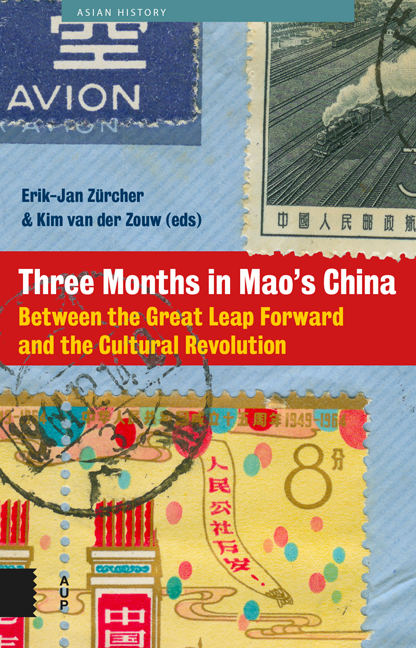Introduction
Published online by Cambridge University Press: 12 December 2020
Summary
On 13 September 1964 my father, Erik Zürcher, turned 36. That year, his birthday was not celebrated during the day with the family, with coffee and cake and heated discussion as was customary, but in the evening, with a large party at a big house belonging to some married friends, Kitty and San Go. It was a party with friends and colleagues, most of them linked to the Institute of Sinology in Leiden. There was drinking (a lot of drinking), and there was music, dancing and speeches. The dancing in particular was exceptional for this group of friends, for whom parties tended to mean drinking, smoking and endless chatting.
The reason for all this exuberance was that the birthday party was also a farewell party: two days later, together with his old college friend, Gan Tjiang-Tek, the curator of the Chinese collection at the National Museum of Ethnology in Leiden, Erik would leave on a six-month voyage, of which four months, he hoped, would be spent in China.
By 1964, Erik Zürcher had been a professor in Leiden for three years. He was a ‘sinologist’; that is to say, he had studied Chinese language and literature and had also taken his doctorate in that field in 1959. Despite this, it was not as Professor of Chinese that he was appointed in 1961. Leiden already had a professor in that field – Anthony (‘Toon’ to his friends) Hulsewé – and with just a handful of students of Chinese each year, two professors would have been too much of a good thing. Erik had been a brilliant student though, and his thesis, The Buddhist Conquest of China, on which he had worked for six years, was recognized as a pioneering work immediately upon publication. Armed with offers from various American universities, he was able to set his terms. Leiden wanted to keep him, so in 1960 he was made a lector (a now-defunct university rank under that of professor), and less than a year later, in 1961, professor of ‘the history of East Asia, and in particular East-West relations.’ This somewhat bizarre title allowed the university to appoint him alongside Hulsewé, who was eighteen years his senior.
- Type
- Chapter
- Information
- Three Months in Mao's ChinaBetween the Great Leap Forward and the Cultural Revolution, pp. 9 - 24Publisher: Amsterdam University PressPrint publication year: 2017



